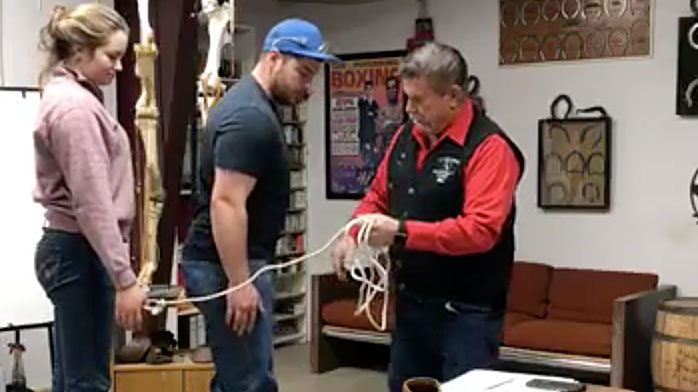Do you know the function that the Navicular bone plays in the limb? The Navicular bone’s job is to guarantee the angle of insertion of the Deep Flexor Tendon into P3. Does that make sense? Probably only to an engineer. Let’s look at a visual.
When this horse is moving, we have a normal range of motion. The fetlock drops, it comes back up, the foot strikes the ground, and the bodyweight passes over. During this process, the Deep Flexor Tendon pulls on Coffin Bone. All the fibers that hold the coffin bone to the hoof wall, are on the dorsal surface at the front of the hoof.
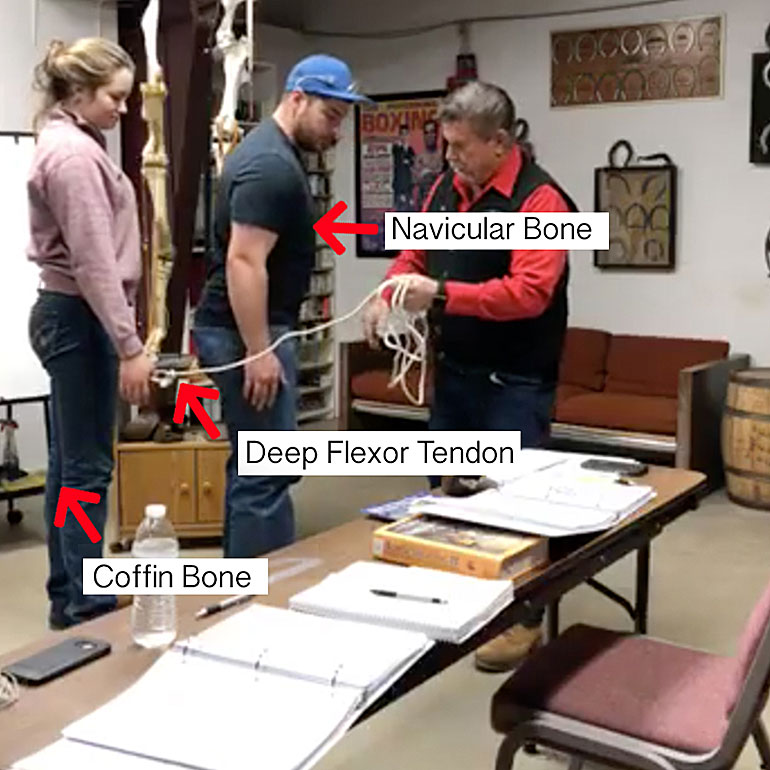
We want to make sure that when the deep flexor tendon pulls on the coffin bone, it only pulls in one direction. The direction that has the resistance of the lamina no matter where the horse is in a movement.
As we go into the movement, you'll notice that no matter where I am, or how this tendon pulls, the coffin bone (Kylie's arm) is only moving in one direction against the Navicular bone. It guarantees that the pull is going to be identical regardless of where that fetlock is within its motion.
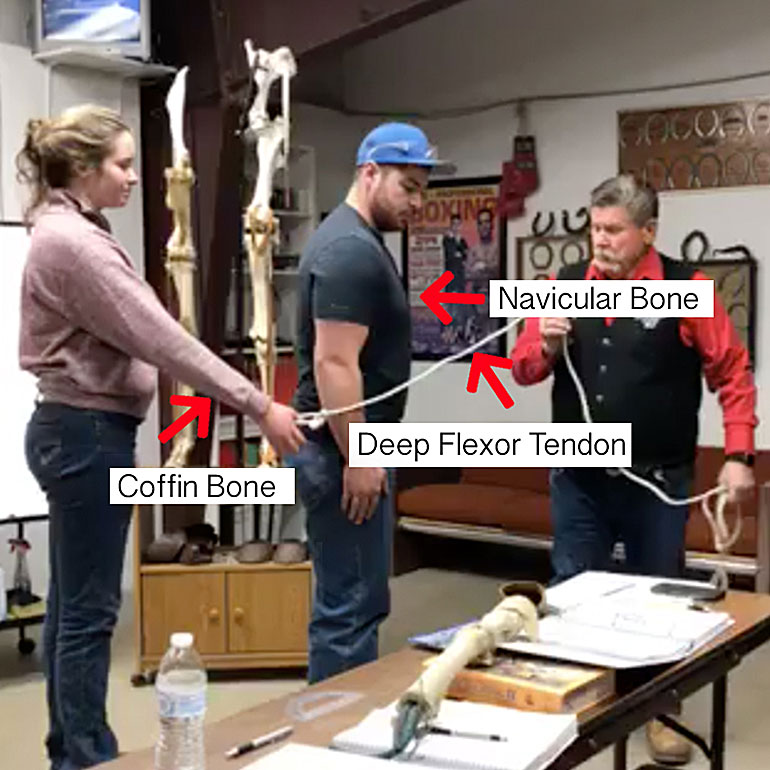
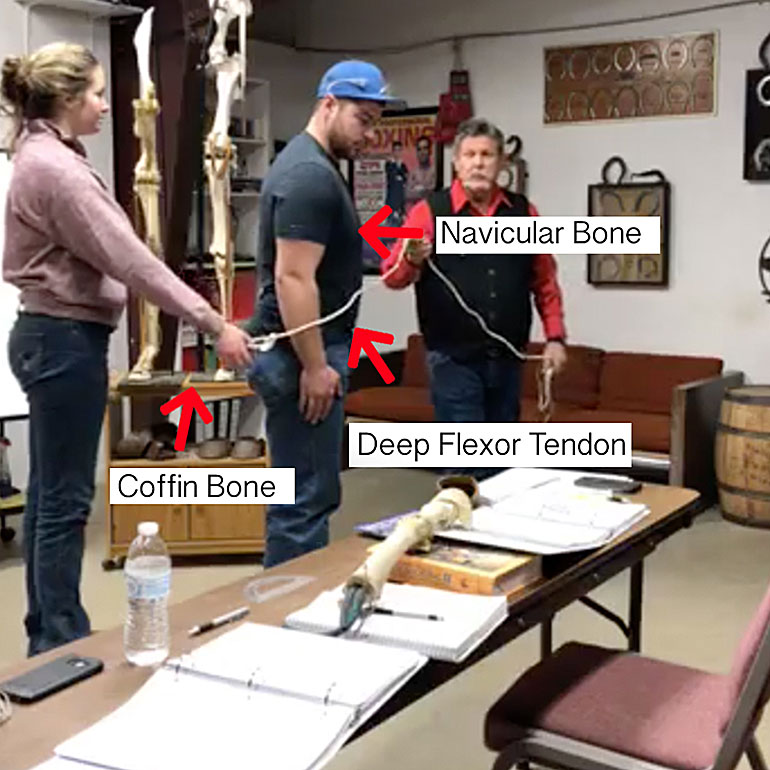
If there was no Navicular bone, look at the different ways that we would be pulling the coffin bone during movement.
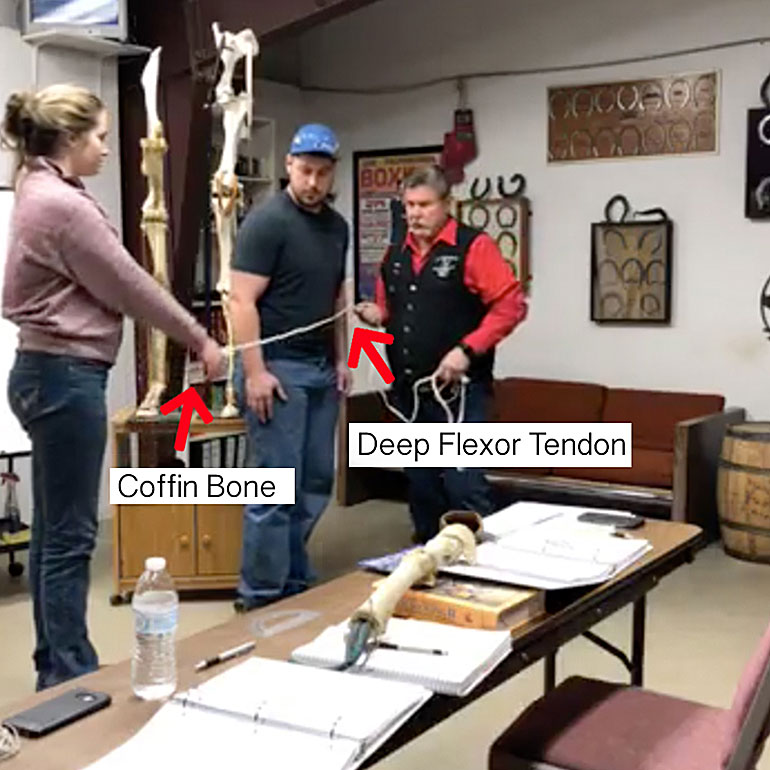

We have some control over the amount of tension that's placed on the Navicular bone with our shoeing and our trim. Where we put the toe of the horse plays a part in the angle of the coffin bone and makes a considerable difference in the stress on that Navicular bone.
If a horse has too much toe, the coffin bone has too much leverage on the Deep Flexor Tendon, which erodes the Navicular bone. Dr. Renate Weller showed us that for every centimeter of excessive toe, there are an extra 110 pounds of pressure to the Navicular bone.
We control that break over with our trimming the mechanics of the shoes. The Navicular area creates a lot of problems for a lot of performance horses. As farriers, we can control some of the stress placed on that bone by how much toe we leave on the horse.
Want to become a professional farrier? Apply Now
